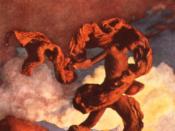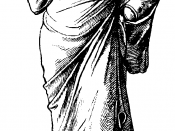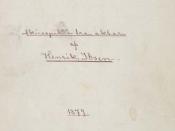As each different person in this world takes a different point of view, a clash between these views can often cause a conflict. A view that is considered as being fundamentally right or wrong by one person may differ drastically from what another person considers to be right or wrong. These contradictory perceptions of each individual will result in differing answers to crucial moral questions. These different answers will mean that people will have a strong belief towards their own ideas about what is right; this may result in the growth of different moral goals. These differing goals can result in a moral conflict. This is clearly seen in both, "Antigone" and "A Doll's House."
There are quite a few similarities and differences observed, between Sophocles', "Antigone" and Ibsen's, "A Doll's House", with regards to the moral conflicts which occur in the play and the manner in which they are portrayed.
By viewing the surface one can see that both authors have avoided using male protagonists in the plays, which is quite repeatedly observed in plays at the time of their production. Instead, Sophocles uses Antigone and Ibsen uses Nora, both females, as the main protagonists. The authors further develop the conflict with society by building up a conflict between the female protagonists and the chief male characters. The female heroines are forced to decide whether they should do what society demands of them or do what they consider morally right. Although the conflicts are similar, in which both of them have problems with the demands of society, Sophocles portrays Antigone's main conflict being between divine law and human law, and how she has to choose which law she will follow, whereas, Ibsen uses two moral figures which shadow the central characters, Dr. Rank to...


